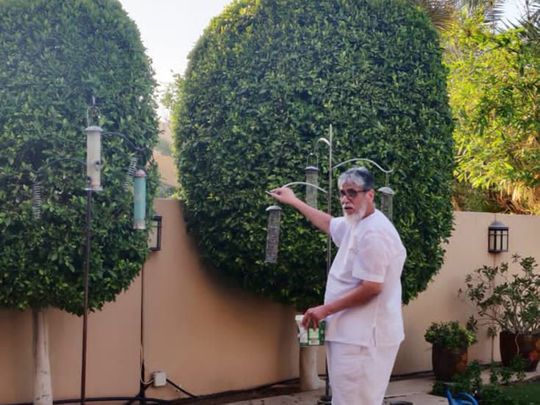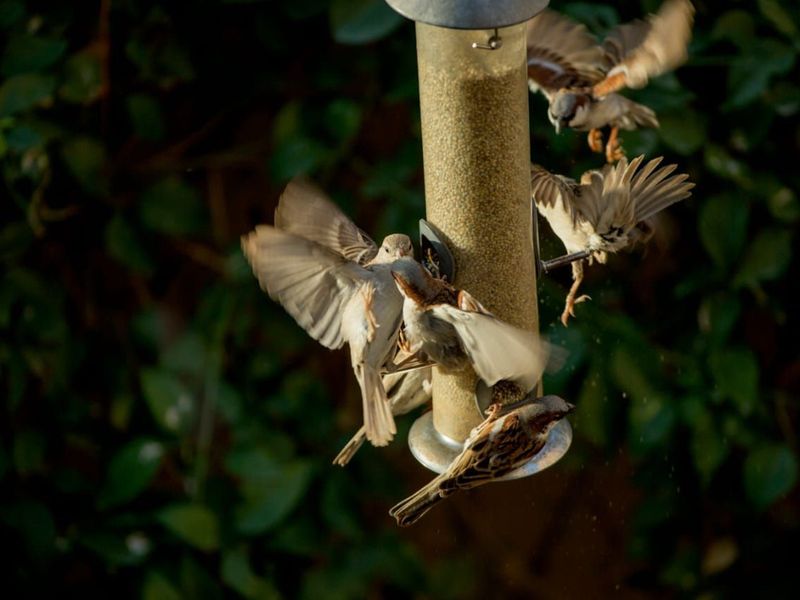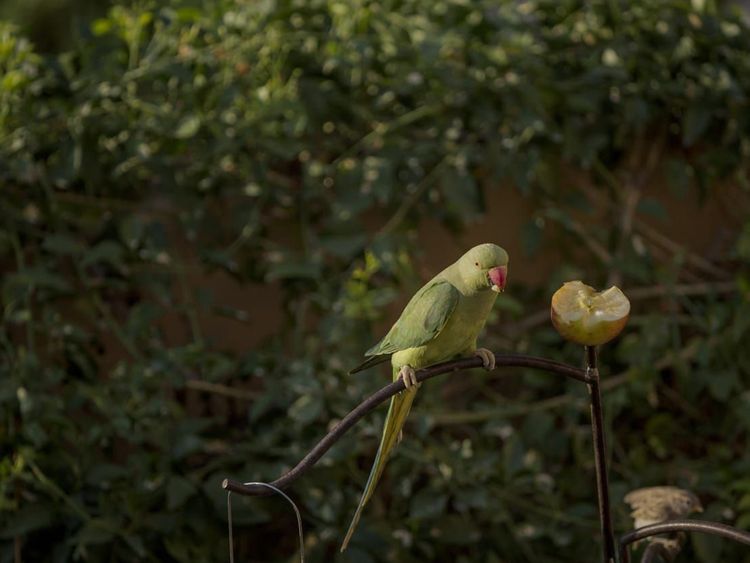
Dubai: The sprawling garden area of an Indian businessman’s villa in Arabian Ranches 2 has pretty much turned into an aviary.
The five-bedroom villa of Hussain Ahmedali Nalwala, 74, at Hattan Arabian Ranches, comes with a garden space of about 4000 square feet. Nalwala a lover of birds and animals has set up seven feeder stations to attract a variety of birds to his residence.
Nalwala, who is president of Anchor Allied Factory Limited, a construction chemicals business, said his love for birds inspired him to take the initiative to feed these feathered species who flock in hundreds to his garden every day.

Explaining how it all started, Nalwala said it all began six years ago when he brought home two African grey parrots and there has been no looking back since. Today, Nalwala’s feeder stations attract hundreds of birds daily for food. “When I had the African grey parrots, my wife fell sick unfortunately. The feather from the birds caused discomfort to her. So I had to sell them off to another bird enthusiast. But it broke my heart. When I moved home to Arabian Ranches, I got a big garden space. I decided to set up feeder stations and attract birds to my house. From two birds, I see hundreds every day. It makes me happy.”
Feeding the birds
Nalwala said the food for the birds are Bajra for small sparrows, sunflower seeds and corn during the season for parrots, mix seeds for pigeons, apples and at times papaya for bulbuls and mynas.
Nalwala shared pictures of the birds that flock his garden every day. Gulf News sent these pictures to Dr Reza khan, Principal Wildlife Specialist in Dubai Safari, who identified the birds and shared his comments on how to take care of these birds for the benefit of Nalwala. Several house sparrows, feral rock pigeons, red-vented bulbul, rose-ringed parakeet are seen feeding in garden.
Indigenous and exotic birds
Dr. Khan said: “There are no indigenous birds in the pictures. Sparrows and pigeons are there in huge number as they are domesticated species. It’s good that someone is taking care of the feathered bipeds whether they maybe indigenous or exotic. They need such caring hands for survival. This is undoubtedly a good initiative and hope more people do the same,” he said.
Tips from Dr. Reza Khan on attracting birds to your garden
Decide what birds you want to attract: Khan said bird lovers must decide on what type of birds they want to attract to their garden — whether granivorous bird or grain eating birds.
Set up your food dispensing device: Once you have decided this — set up your seed dispensing device (available in all pet shops). They must hang in a shaded area of your compound.
Keep water: Drinking water must be kept as well and should be dispensed through a water drinker (also available in all pet shops). Then keep good water for bathing in an open plate or shallow pot/container not more than two inches in height.

Food for frugivorous birds or fruit-eating birds: For these birds, fruits, lettuce, alfalfa grass can be served. Apples and pears can be halved and fixed on blunt vertical objects. Lettuce and alfalfa can be chopped and kept in serving plates. A bundle of lettuce and alfalfa can be tied to a post at least two metres above ground. Keep them close by so birds can fetch the food.
Insect eating birds
Insect-eating birds: Khan said one needs to have patience serving food for such birds. Usually food such as mealworms, crickets, beetle larvae is feed. “In the UAE, one needs to grow, produce mealworms at home. Once you have 10 to 100 pieces of these worms — maybe from a pet shop you can keep them at home in a covered shallow aquarium / bowl but with lids having holes for aeration. The worms need oats, sliced white bread, apples, potatoes cut into half and keep cut side down- the mealworms will grow to pupa and then adults who will produce eggs, to larvae. You can use larvae to serve to birds under a bush or a shaded place and see how insect-eating birds adorn your garden,” said Khan.









